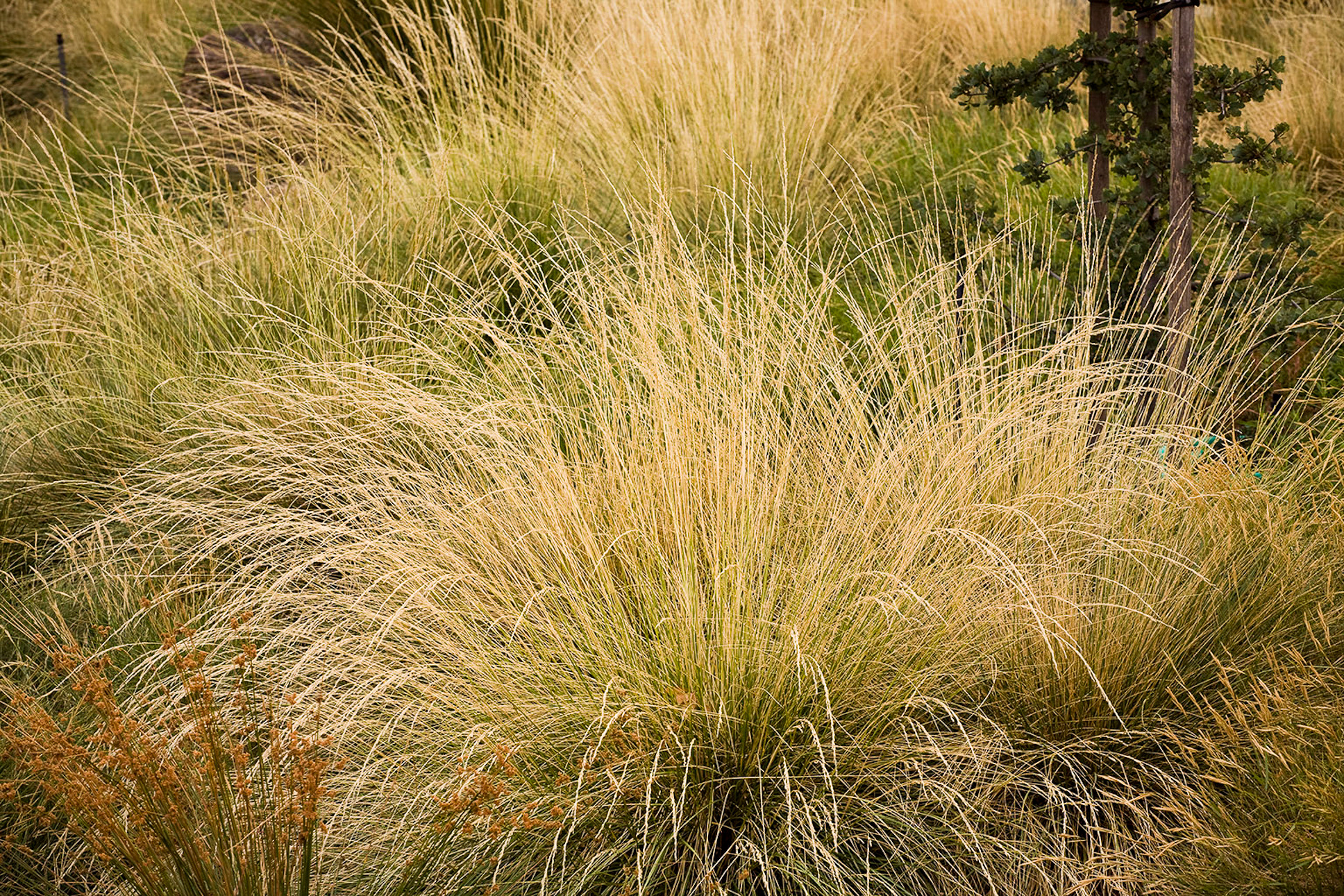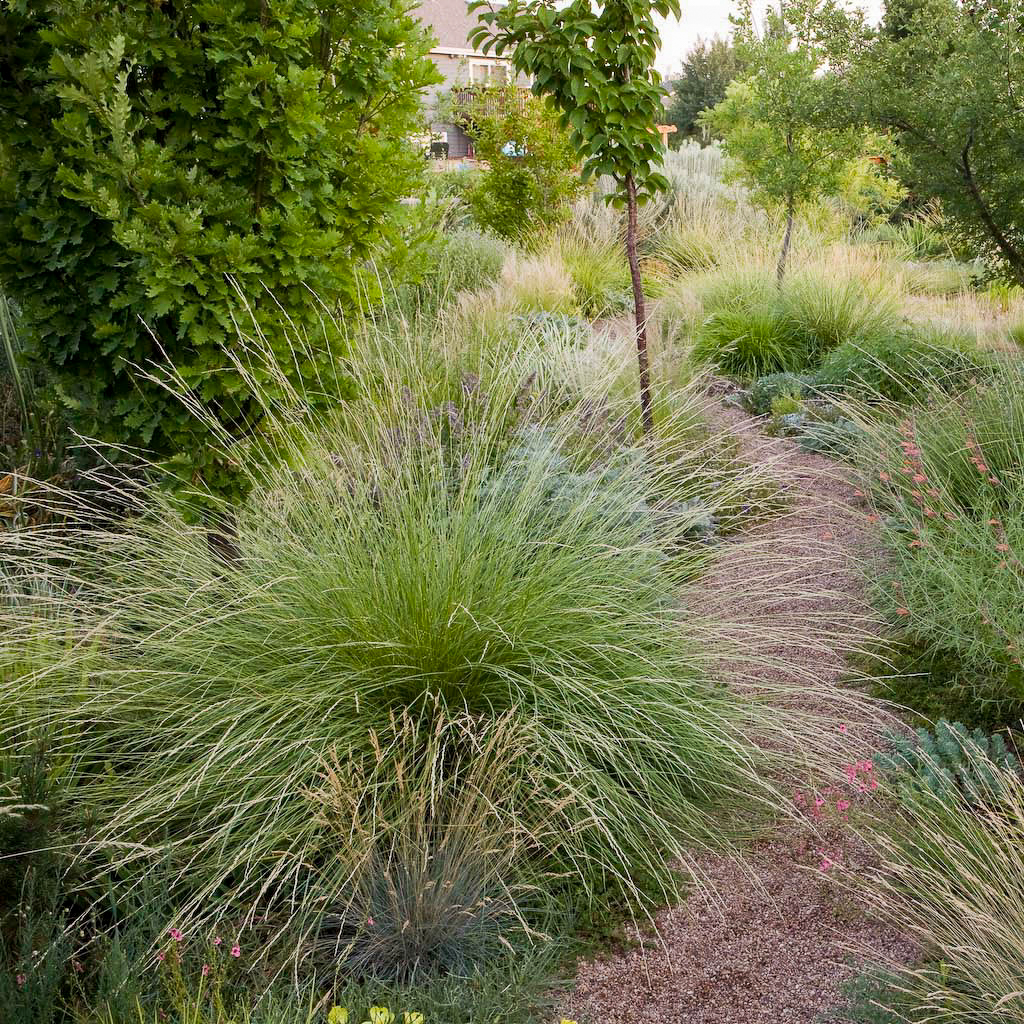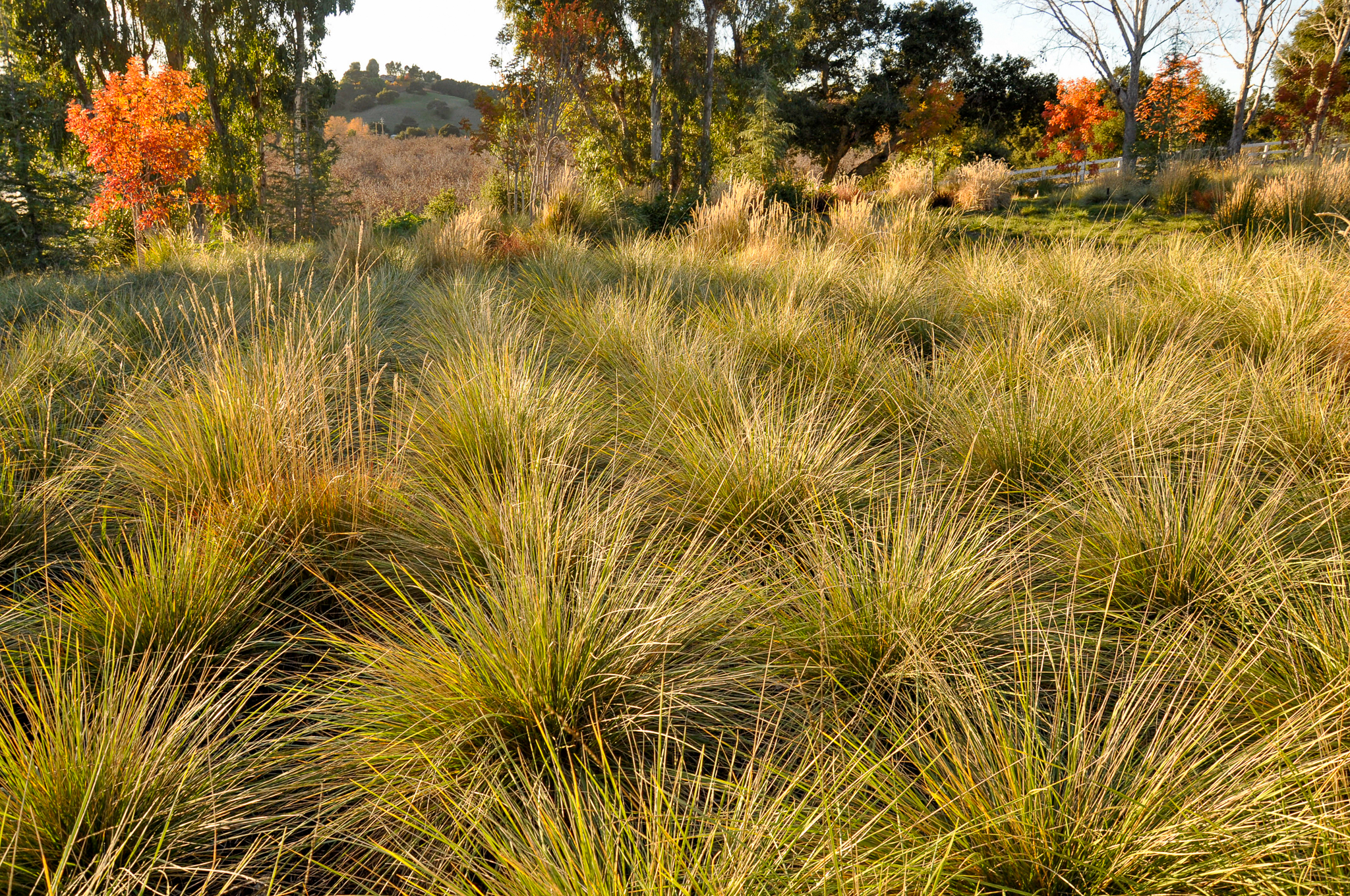
Festuca mairei
Atlas Fescue
Description
This long-lived evergreen clumping grass is one of my go-to grasses for making meadows in a Mediterranean climate. It's arching fountain like foliage is a rich warm khaki green that is a great blending color in western landscapes. Durable, tidy, long-lived, and dependable, the Atlas fescue is hard to beat as a large-scale groundcover grass.
The pleated leaves grow in clumps 2.5-3 feet tall and as wide. The flowers are slender and usually not showy. Almost always neat, this grass is prefect for a sunny drought-tolerant meadow.
Native to the Atlas Mountains in North Africa, it is reported to grow in southern Europe as well. There are currently two distinct clones being offered by California nurseries and sadly few nurseries are aware of the origin of their stock and many have mixed inventory and are unaware of the two clones.
Our original plants came from famous plantsman Kurt Bluemel in Maryland. The clone came from the European nursery trade and flowers spikes were inconspicuous, slender and did not produce viable seed. Some 6-7 years ago, the plant was offered by the Jelitto Seed Company and plants from this seed strain are almost completely difference plants. The seedling strain has courser foliage that grows 2-3 feet high and as wide, but has noticeably showy flower spikes that grow 2.5-3 feet above the foliage. Plants are similar when young and hard to distinguish from each other until they flower. I have often blended the two clones in plantings, sometimes on purpose, others by serendipity not knowing I had two clones. The 'flowering form', as we refer to it, actually sets viable seed and naturalizes in irrigated settings. The flowering form will noticeably differ from the original clone so care should be taken to shop from nurseries that know where their stock comes from.
Atlas fescue grows best in full sun or light shade. It tolerates a wide variety of soil conditions from sand to clay. It is evergreen in all but the coldest climates. In cold winter climates, frozen winter foliage turns to a parchment color.
John's Notes
General Details
Plant Type
Grass, Poaceae
Native Region
Northern Africa
Seasonality
Cool-season, evergreen
Height
2.5-3 feet
Width
2.5-3 feet
Alternate Names
Moroccan Fescue, Maire's Fescue
Aesthetic Form
Landscaping Value
Groundcover, flowering accent grass
Foliage
Arching khaki-green leaves
Flower Form
Tall, airy flower stalks with white feathers
Bloom Cycle
Summer
Growth Habits
Clumping, fast establishment
Plant Pairings
No Available Information
Care & Maintenance
Watering Needs
Low, drought-tolerant
Soil Preferences
Wide adaptability from sand to clay
Sun Exposure
Full sun to partial shade
Winter Heartiness
< 0° F, USDA zone 4-10
Desert Adaptability
No Available Information
Costal Adaptability
No Available Information
Want to use this plant for a
Home garden?
Commercial design?
Meadow planting?
Landscaping Project?
Gallery




